I’ve been knee-deep in the world of TPE (Thermoplastic Elastomer) processing for over 15 years, tweaking machines, troubleshooting defects, and helping clients get their products just right. One issue that crops up time and again—and trust me, it’s a real head-scratcher until you crack it—is stringing, those pesky gel-like threads that form during injection molding or extrusion. They can ruin a part’s appearance, clog up molds, and slow down production. If you’re dealing with stringing in TPE materials, I feel you. I’ve been there, staring at a mold spitting out parts with wispy threads, wondering where I went wrong. In this article, I’m going to walk you through why stringing happens, how to fix it, and share some practical tips from my years on the factory floor. My goal is to help you get your TPE process running smoothly, with parts that look as good as they perform.

What Causes Stringing in TPE Materials?
Stringing, sometimes called “gel silk” or “angel hair,” happens when molten TPE forms thin, stringy residues as it exits the nozzle, gate, or die. It’s especially common in injection molding, where the material lingers at the mold’s gate, or in extrusion, where it stretches at the die. From my experience, TPE’s unique properties—its elasticity and flowability—make it prone to this issue, but several factors can push it over the edge:
Material Properties: TPE’s viscosity and molecular structure mean it can stay sticky even as it starts to cool.
Processing Parameters: High temperatures, excessive pressure, or short cooling times can leave TPE too fluid at the wrong moment.
Mold or Die Design: Poor gate sizing, inadequate venting, or uneven cooling can trap or stretch the material.
Equipment Issues: A worn nozzle or inconsistent heating can disrupt clean material flow.
Environmental Factors: Humidity or contamination can mess with TPE’s behavior.
I remember my first run-in with stringing—molding TPE grips for a client, and every part came out with annoying threads at the gate. It took hours of tweaking to figure out the root cause, but that experience taught me how to tackle it systematically. Let’s break down the solutions, step by step.
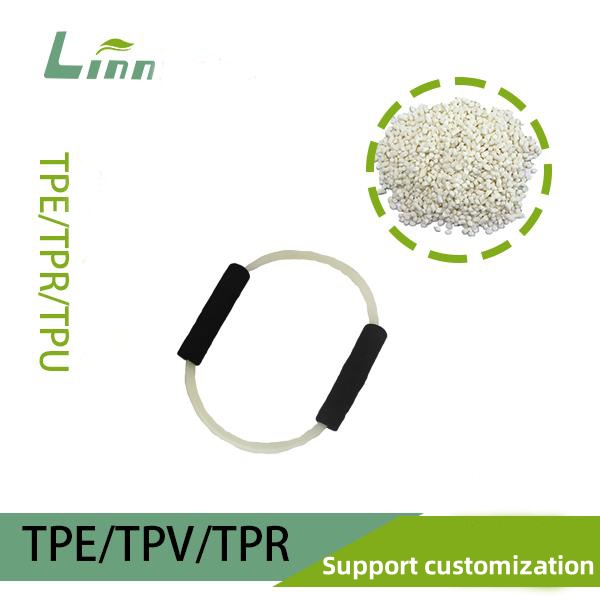
How to Fix Stringing in TPE Processing
To beat stringing, you need to tackle it from multiple angles: material, process, mold, and equipment. Here’s how I do it, with lessons learned from countless production runs.
1. Optimize the TPE Material
The material itself is your starting point. Not every TPE grade behaves the same, and some are more prone to stringing than others.
Choose a Lower-MFI Grade: TPEs with high Melt Flow Index (MFI)—say, 20-50 g/10 min—flow easily but can string if they’re too fluid. Switching to a lower-MFI grade (5-15 g/10 min) gives you more control. I once worked on a TPE phone case where stringing was rampant; swapping to a 10 g/10 min SEBS-based TPE cut the issue by 80%.
Dry Thoroughly: TPE loves to soak up moisture, and wet material can cause stringing by forming steam or bubbles. I dry pellets at 175-210°F (80-100°C) for 2-3 hours, aiming for moisture below 0.1%. A dehumidifying dryer is my best friend here—saved me from a scrapped batch more than once.
Add Anti-Stringing Aids: Small amounts of slip agents or anti-stick additives (0.3-0.8%) can reduce TPE’s tendency to cling. Be careful, though—too much can affect clarity or adhesion. I’ve used silicone-based aids for clear TPE tubes with great results.

Check for Contamination: Recycled TPE or mixed batches can string due to inconsistent properties. I always inspect pellets for specks or color variations and test MFI to confirm purity.
My Tip: If stringing persists despite tweaks, ask Linn’s material team to recommend a TPE grade tailored to your mold. A quick call can save days of trial and error.
2. Fine-Tune Processing Parameters
The way you process TPE has a huge impact on stringing. Here’s a table of key parameters I adjust, based on years of debugging:
| Parameter | Why It Causes Stringing | How to Fix It |
|---|---|---|
| Barrel Temperature | Too high, TPE stays too fluid | Lower to 355-410°F (180-210°C); keep rear zone 10-20°F cooler than middle. |
| Nozzle Temperature | Overheated nozzle keeps TPE sticky | Set 10-15°F below barrel’s front zone; clean nozzle regularly to avoid residue. |
| Injection Pressure | Too high, forces excess material through gate | Reduce to 1150-1600 psi; use staged injection to ease material in. |
| Holding Time | Too short, gate doesn’t solidify | Extend to 0.5-2 seconds to let gate cool fully before mold opens. |
| Cooling Time | Insufficient cooling leaves TPE semi-molten | Increase to 5-15 seconds, depending on part thickness, for complete set. |
| Mold Temperature | Too low, causes uneven cooling | Raise to 105-140°F (40-60°C) to stabilize material flow and solidification. |
Temperature Control: Overheating is a stringing magnet. I start at the lower end of the TPE’s recommended range and creep up only if flow suffers. For a TPU-based TPE, I dropped the barrel from 430°F to 400°F, and stringing vanished.
Pressure and Speed: High pressure pushes TPE out too fast, leaving threads. I use a multi-stage injection profile—low to start, then ramp up—to keep things smooth.
Timing: Short holding or cooling times let TPE ooze before it sets. I add a second or two to holding time for thick parts, ensuring the gate seals properly.
Real Story: I was molding TPE seals once, and stringing was killing our yield. Lowering the nozzle temp by 10°F and adding 0.7 seconds to holding time fixed it in an afternoon. Always log your changes—makes it easier to replicate success.
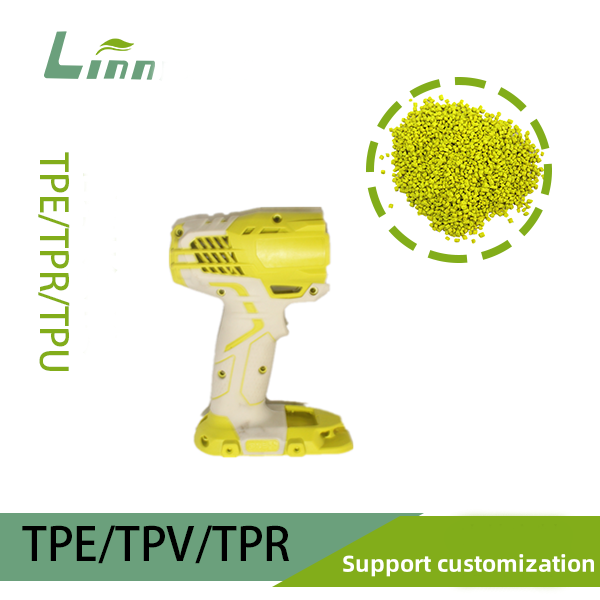
3. Improve Mold or Die Design
If material and process tweaks aren’t enough, the mold or die might be the culprit. Here’s what I check:
Gate Design:
Size: Gates that are too large let excess TPE flow, causing strings. I aim for 0.02-0.06 inches (0.5-1.5 mm), depending on part size.
Type: Pinpoint or sprue gates can string more than fan or edge gates. I switched a client’s mold to a valve-gated hot runner, and stringing dropped to near zero.
Venting: Poor vents trap air, creating hot spots that keep TPE fluid too long. I add vent slots (0.0004-0.0012 inches wide) at the parting line or cavity end to let air escape.
Cooling Channels: Uneven cooling causes stringing at hotter spots. I ensure channels are evenly spaced and water is at 60-75°F (15-25°C). A mold I fixed had a clogged channel—clearing it stopped stringing cold.
Surface Finish: Rough gate areas grab TPE, encouraging strings. I polish gates to a mirror finish or apply a DLC coating to reduce stickiness.
Case Study: A TPE keypad project had stringing at every gate. The mold used large sprue gates, so I redesigned them to smaller fan gates and added two vents. Defect rates fell from 15% to 1%.
4. Maintain Equipment
A poorly maintained machine can turn a good TPE into a stringy mess. Here’s my checklist:
Clean Nozzles and Dies: Residue buildup disrupts flow, causing strings. I clean nozzles with a purging compound after every shift—takes 15 minutes but saves hours.
Inspect Screws and Barrels: Wear can cause uneven melting, leading to stringing. I check screws yearly with an endoscope; a worn screw once cost me a week of bad parts.
Calibrate Heaters: Faulty heater bands create hot or cold spots. I use a thermocouple to verify barrel temps match the setpoint.
Check Pullers (for Extrusion): Inconsistent pulling stretches TPE into strings. I calibrate puller belts weekly to keep tension steady.
My Lesson Learned: I ignored a dirty nozzle once, thinking it was “good enough.” Stringing got so bad we had to stop the line. Now, I treat cleaning like brushing my teeth—non-negotiable.
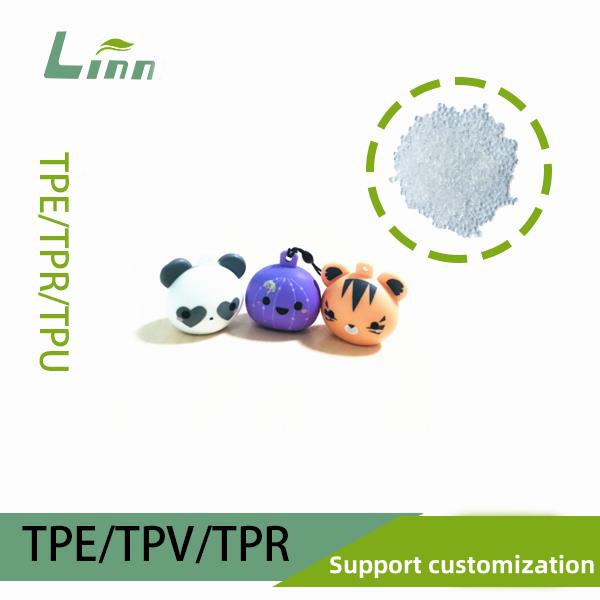
5. Control Environmental Factors
The workspace matters more than you’d think:
Humidity: TPE absorbs moisture, which can worsen stringing. I keep workshop humidity below 50% with industrial dehumidifiers. A humid summer day once spiked my defect rate until I installed them.
Material Storage: Store pellets in sealed bags to avoid dust or moisture. I’ve seen contaminated TPE string like crazy—proper storage is cheap insurance.
Cleanliness: Dust or oil in the hopper can mix into TPE, causing strings. I vacuum hoppers before loading and use filtered air in cleanrooms for medical parts.
Pro Tip: Check your dryer’s desiccant yearly. A worn-out dryer let moisture sneak into my TPE once, and stringing was just the start of the mess.
Step-by-Step Approach to Eliminate Stringing
Here’s how I tackle stringing when it shows up:
Inspect Material: Check pellets for moisture or contamination. Dry thoroughly and consider a lower-MFI grade.
Adjust Temperatures: Lower barrel and nozzle temps by 10-20°F, focusing on the front zones.
Tweak Pressure and Timing: Reduce injection pressure and extend holding/cooling times slightly.
Examine Mold/Die: Verify gate size, venting, and cooling. Polish or redesign if needed.
Clean Equipment: Purge nozzles, check screws, and calibrate heaters.
Test and Log: Run a small batch, inspect parts, and record settings. Repeat until stringing stops.
My Rule: Change one thing at a time and test. I learned this after tweaking temp and pressure at once—couldn’t tell what worked!
Comparing Stringing Across TPE Types
Not all TPEs string the same. Here’s a quick table based on my experience:
| TPE Type | Stringing Tendency | Why It Happens | Fixes That Work |
|---|---|---|---|
| SEBS | Moderate | High flowability at high temps | Lower temps, smaller gates, add slip agents |
| TPU | High | Sticky even when cooling; high viscosity | Extend cooling, use valve gates, reduce pressure |
| TPV | Low | Cross-linked structure reduces flow extremes | Optimize vents, maintain steady temps |
| TPO | Moderate | Flow varies with additives | Balance MFI, polish mold surfaces |
My Insight: TPU is the worst offender—its stickiness drives me nuts. SEBS is easier if you keep temps in check.
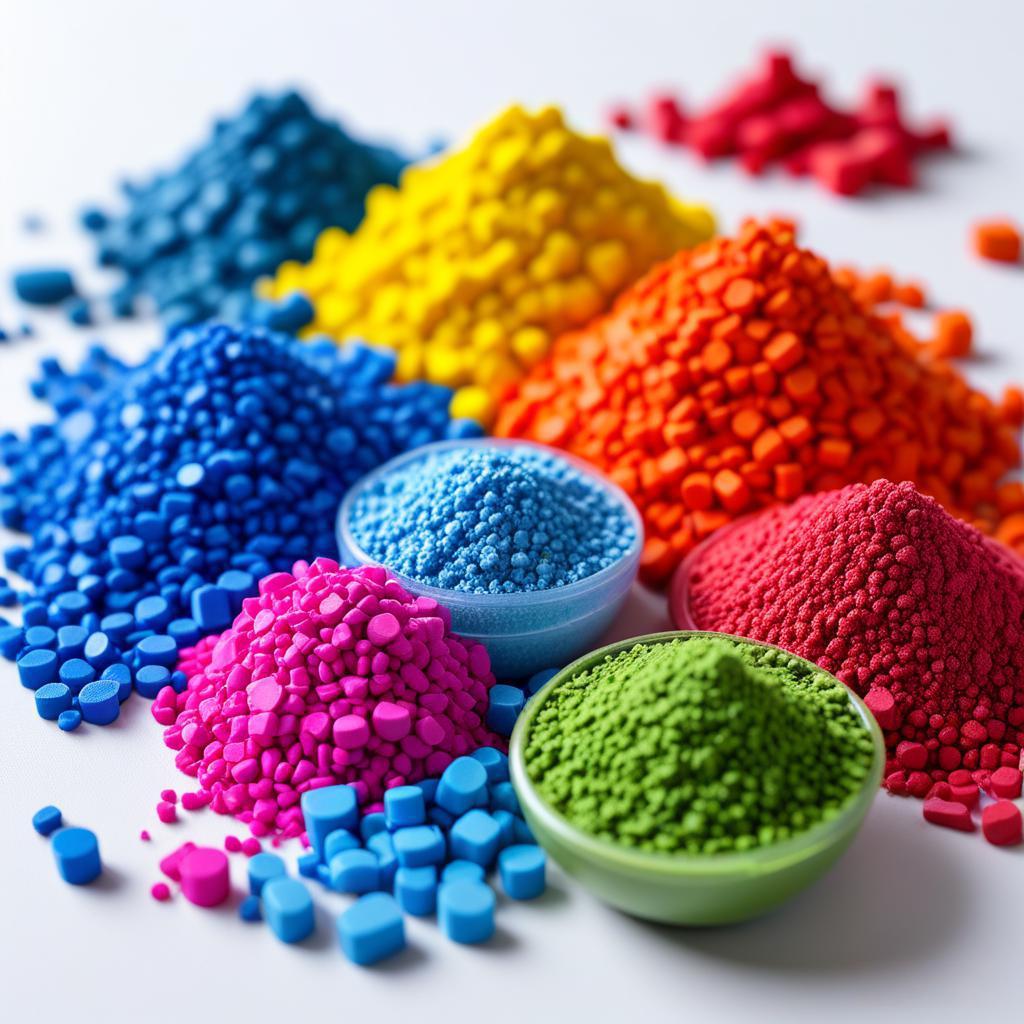
Preventing Stringing in Future Runs
Once you’ve squashed stringing, keep it gone:
Standardize Settings: Save your winning parameters in a process sheet. I share mine with operators to avoid guesswork.
Train the Team: Teach workers to spot early signs of stringing (e.g., wispy gates). My crew knows to pause and flag issues.
Schedule Maintenance: Clean dies and nozzles weekly, inspect molds monthly. I budget an hour a week for this—it pays off.
Monitor Material: Test new batches for MFI and moisture. I caught a bad lot once because its MFI was off by 10 g/10 min.
Review Data: Check defect logs quarterly to spot trends. I found a recurring stringing issue tied to a worn screw this way.
My Takeaway: Prevention beats cure. After a stringing nightmare cost me a tight deadline, I got religious about proactive checks.
Common Questions About TPE Stringing
Here are answers to questions I get a lot, straight from my experience:
Q1: Why does stringing only happen with some TPE batches?
A: Batch variations—like MFI, additives, or recycled content—can change flow behavior. Test MFI and compare to the datasheet. I’ve rejected lots that strayed too far.
Q2: Can mold release sprays stop stringing?
A: They help a bit by reducing stickiness, but overuse leaves greasy parts. I’d rather polish gates or add a slip agent (0.3%) for a cleaner fix.
Q3: My TPE strings less at lower temps, but parts look dull. What’s up?
A: Low temps can reduce gloss by slowing flow. Try raising mold temp slightly (5-10°F) or polishing the cavity for better shine.
Q4: Does stringing affect part strength?
A: Minor stringing is cosmetic, but heavy stringing at gates can weaken them. I test tensile strength on suspect parts to be sure.
Q5: How do I know if my mold design is causing stringing?
A: If process tweaks don’t help, check gate size and venting. I’ve redesigned molds with oversized gates—problem solved in days.
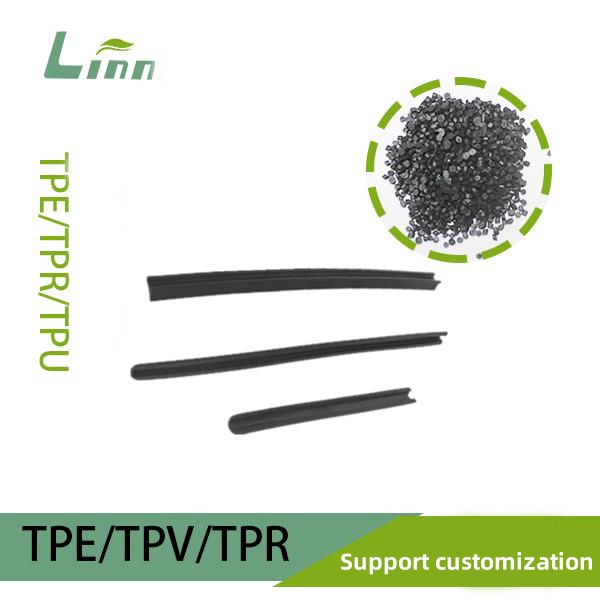
Wrapping Up
Stringing in TPE materials can feel like a relentless foe, but it’s beatable with the right approach. By dialing in your material, process, mold, and equipment, you can banish those gel-like threads for good. I’ve learned through years of scrapped parts and late nights that persistence and precision are key. Take it one step at a time, log your wins, and don’t be afraid to experiment.
If stringing’s got you stumped or you need help picking the perfect TPE, Linn’s team is just a call away. We’ve tackled this issue for countless clients and can guide you to cleaner, faster production. Here’s to parts that come out flawless, every time!
